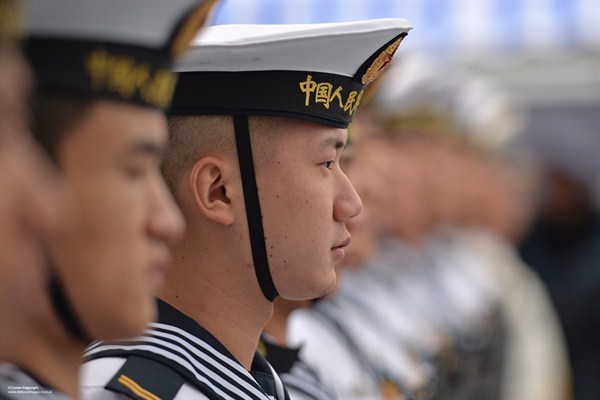Editor’s note: This article is one of three briefings on China’s rise and its implications for U.S. regional and global interests, coinciding with an upcoming panel, in collaboration with WPR, at the St. Petersburg Conference on World Affairs on Feb. 17-19 in St. Petersburg, Florida. The first, on China’s global economic ambitions, appeared Monday; the third, on China’s cyber strategy, will appear Friday.
The past two years have seen impressive advances in the People’s Liberation Army (PLA) Navy’s capabilities. In 2015, China revealed that it had begun building its second aircraft carrier and that it had begun its first submarine nuclear deterrent patrols. Breaking past convention against military bases in other countries, China last year announced that arrangements had been made for its first military support base abroad, in Djibouti.
The PLA Navy is expanding its capabilities and operations to reduce vulnerabilities in China’s near seas, but also to aggressively support its expanding global ambitions and challenge U.S. leadership in Asia. As trade has powered much of the phenomenal growth that propelled China’s economy to become the second largest in the world, security for maritime transit lanes has increased in importance. The number of Chinese citizens and valuable assets overseas has also expanded, with state-owned enterprises alone reported to employ 300,000 Chinese citizens abroad. Meanwhile, tensions have grown in the maritime domain over China’s efforts to control the South China Sea and Senkaku Islands, which it claims as the Diaoyu. China also continues to bolster its navy’s ability to support contingencies related to Taiwan and other scenarios.

